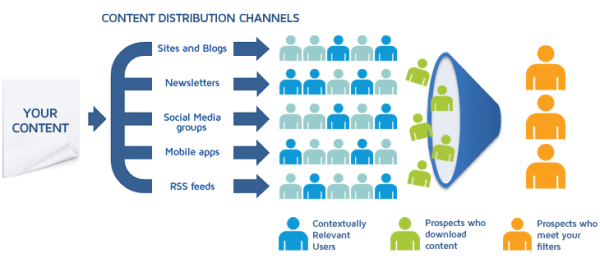Recently there has been good coverage of how critical distribution is for a content marketing strategy. This is something I talk to clients about often. There is no “build it and they will come” with content marketing, no matter how good your content may be.
Forrester came out with a new report early this month on planning your distribution strategy prior to any execution. Investment in what they refer to a branded content is rising fast, but not enough attention is being paid to how to get that content in front of target audiences.
Saying that content without distribution will fail to meet objectives makes intuitive sense, but what might an effective strategy look like? Mediapost went into a bit more detail with Ryan Skinner, the author of the Forrester report. he suggested as an example considering whether Facebook, a branded publication or a third party influencer would be a better channel for a company’s content based on CTR, engagement and demographics.
A more granular idea of what a distribution strategy could look like comes from Mitch Joel, president of digital agency Twist Image. He describes how a very well known blogger combines his content and distribution into a unified process:
The strategy for success is more distribution that creation. They test things on Facebook, and then blow it out into a newsletter article if it gets traction on Facebook. Once they get the analytics from their email newsletter, they decide which pieces have done well enough to be blogged about. From there, this individual has a handful of very diverse third-party publishers interested in their content. What does this equate to? For every hour of writing a piece of content, they spend two to three hours working on the distribution of it – within their own channels and beyond. The frequency of publishing is reduced in order to spend more time on the distribution of it.
I can’t say all my clients are doing all of the above. But all of them are employing some of these tactics. Working in B2B/B2G rather than consumer also confers an advantage here, since our campaigns are quality not quantity plays. My clients know where their target audiences are, they usually need help with crafting a consistent story that moves prospects through their sales process.
I wouldn’t go as far as say distribution is more important than content quality, or that it should take more time than content development. But don’t execute on a content marketing strategy without a well thought out distribution plan.

Chris, you are on point here, as usual. There has to be readership in order for the content to accomplish its objective. I can’t tell you how many good articles I come across that deserve a wider reach to their target audience.
A good indicator I like to look for is the social share widgets to see if there is activity with the content. Seeing some activity on here plays a sort of psychological factor in telling me that there is an active and engaged readership, even though the writer could’ve easily used these buttons to share and make it appear as if there is activity.
Thanks for posting.